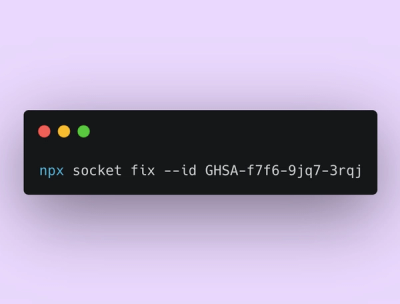
Product
Rust Support Now in Beta
Socket's Rust support is moving to Beta: all users can scan Cargo projects and generate SBOMs, including Cargo.toml-only crates, with Rust-aware supply chain checks.
A javascript, websockets-powered dashboard for Riemann.
$ gem install riemann-dash
$ riemann-dash
Then open http://localhost:4567 in a browser. Riemann-dash will connect to the local host (relative to your browser) by default, and show you a small manual. Change the IP address in the top right field to point to your Riemann server's websocket port.
Riemann-dash takes an optional config file, which you can specify as the first command-line argument. If none is given, it looks for a file in the local directory: config.rb. That file can override any configuration options on the Dash class, and hence, all Sinatra configuration. You'll find a few usage examples in "example/config.rb".
set :port, 6000 # HTTP server on port 6000
set :bind, "1.2.3.4" # Bind to a different interface
config[:ws_config] = 'custom/config.json' # Specify custom workspace config
You can also specify the default config file to be used by setting the
RIEMANN_DASH_CONFIG environment variable. If set, this value will override
the default config file location of config.rb when no config file is passed
on the command line.
If you expect more than a couple of simultaneous users, you should consider running Riemann-dash in a proper application server. The easiest way is to install thin or puma. Riemann-dash will automatically use one of them if they are present. You'll need the C/C++ compiler, as well as the ruby and openssl libraries and headers installed.
$ gem install riemann-dash thin
$ riemann-dash
Riemann-dash can also run in a web server supporting the Rack interface. An example rackup app is found in "example/config.ru".
$ git clone git://github.com/riemann/riemann-dash.git
$ cd riemann-dash
$ bundle
# run tests
$ sh/test
$ rake build
$ rake release
$ sh/c
> irb :001 > Riemann::Dash::VERSION
> => "0.2.2"
FAQs
Unknown package
We found that riemann-dash demonstrated a not healthy version release cadence and project activity because the last version was released a year ago. It has 1 open source maintainer collaborating on the project.
Did you know?

Socket for GitHub automatically highlights issues in each pull request and monitors the health of all your open source dependencies. Discover the contents of your packages and block harmful activity before you install or update your dependencies.

Product
Socket's Rust support is moving to Beta: all users can scan Cargo projects and generate SBOMs, including Cargo.toml-only crates, with Rust-aware supply chain checks.

Product
Socket Fix 2.0 brings targeted CVE remediation, smarter upgrade planning, and broader ecosystem support to help developers get to zero alerts.

Security News
Socket CEO Feross Aboukhadijeh joins Risky Business Weekly to unpack recent npm phishing attacks, their limited impact, and the risks if attackers get smarter.